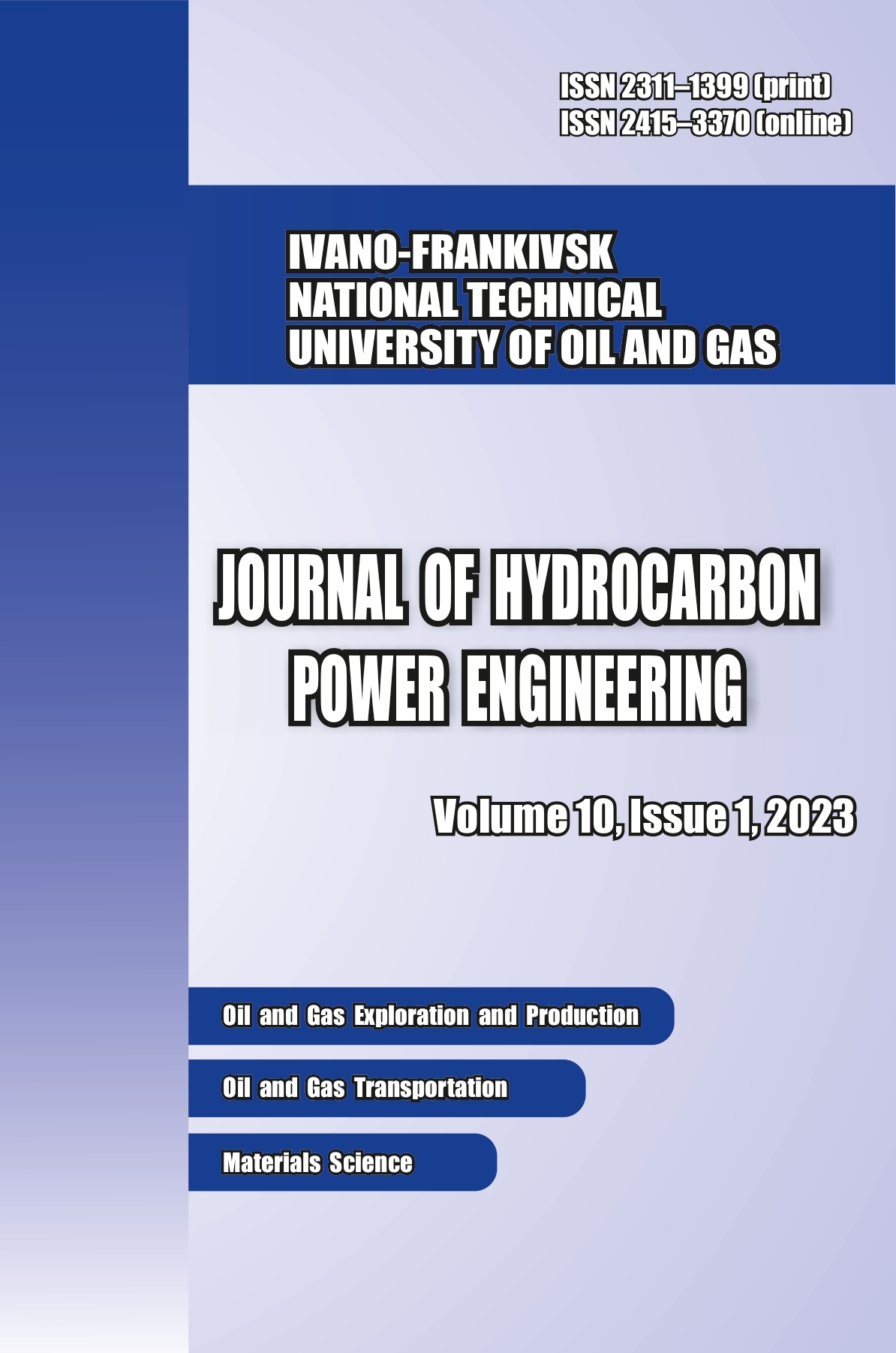To the issue of modeling the pressure distribution in a gas-bearing formation
DOI:
https://doi.org/10.31471/2311-1399-2023-1(19)-8-14Keywords:
computer modeling, increasing of the reservoir’s production period, factors of gas-bearing formations depletion.Abstract
Based on the non-stationary Leibenzon piezoconductivity problem, there is considered the use of the finite-element difference method for estimating the pressure distribution in a gas-bearing formation. Based on the modeling results for a flat design scheme, it has been established that the process of gas-bearing formation depletion is mainly determined by the configuration of the location of production and injection wells, their capacities and filtration parameters. It has been shown that deconcentration of the system of production and injection wells is important for reducing reservoir depletion over time. This procedure is especially relevant for low-permeability formations. As the formation's permeability increases, the approach of the gas phase to production wells increases and the critical zone of depletion decreases. On the other hand, the increased permeability of a gas-bearing layer, during its operation without proper support, quickly leads to its exhaustion. In general, the process of depletion of a separate active section of a gas-bearing layer depends nonlinearly on its permeability. It has been shown that it is advisable to carry out increased production of raw materials at the initial stages of exploitation of a gas-bearing layer. As the formation is depleted, it is necessary to gradually reduce the production, which will lead to the prolongation of the exploitation of the formation. At the same time, it is important to maintain a technically justified value of the permeability of the working area of the formation.
Downloads
References
Abou-Kassem, JH, Farouq-Ali, SM & Islam,MR 2013, ‘Petroleum Reservoir Simulations’, Elsevier, vol. 1, iss. 2, pp. 45–67.
Ohen, HA & Civan, F 1993, ‘Simulation of formation damage in petroleum reservoirs’, SPE Advanced Technology Series, vol. 1, iss. 1, pp. 27–35.
Yaskin, SA, Mukhametshyn, VV, Andreev, VE & Dubinskyi, GS 2018, ‘Geological and technological screening of methods for influencing layers’, Geology, geophysics and development of oil and gas fields, no. 2, pp. 49–55. [in Russian]
Сhen, Z, Huan, G & Ma, Y 2006, Computational methods for multiphase flows in porous media. Society for Industrial and Applied Mathematics, Philadelphia, 521 p.
Trangenstein, JA & Bell, JB 1989,‘Mathematical structure of the black-oil model for petroleum reservoir simulation’, SIAM Journal on Applied Mathematics, vol. 49, iss. 3, pp. 749–783.
Wu, YS & Pruess, K 1988, ‘A multipleporosity method for simulation of naturally fractured petroleum reservoirs’, SPE Reservoir Engineering, vol. 3, iss. 1, pp. 327–336.
Aziz, Kh & Settari, Ye 2004, Mathematical modeling of reservoir systems, Institute of Computer Research, Moscow, 416 p. [in Russian]
Douglas, J, Furtado, F & Pereira, F 1997, ‘On the numerical simulation of waterflooding of heterogeneous petroleum reservoirs’, Computational Geosciences, vol. 1, iss. 2, pp. 155–190.
Ertekin, T, Abou-Kassem, JH & King, GR 2001, Basic applied reservoir simulation, Richardson, Texas, 421p.
Lubkov, MV 2017, ‘Modeling of filtration processes on the boundaries of gas condensate deposits’, Problems and prospects for the development of academic and university science: collection of scientific papers of the Xth International scientific and practical conference (Poltava, 2017), pp.167–173.
Lubkov, МV & Mosiichuk, КО 2021, ‘Modeling of distribution of pressure in a heterogeneous oil-bearing reservoir’, Journal of Hydrocarbon Power Engineering, vol. 8, iss. 2. DOI: 10.31471/2311-1399-2021-2(16)-41-47.
Downloads
Published
How to Cite
Issue
Section
License
Copyright Notice


1.png)





1.png)
